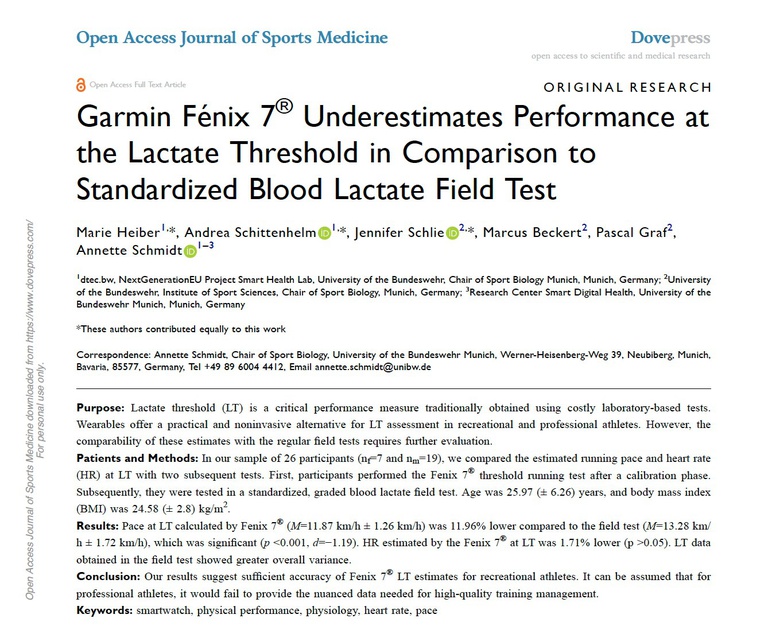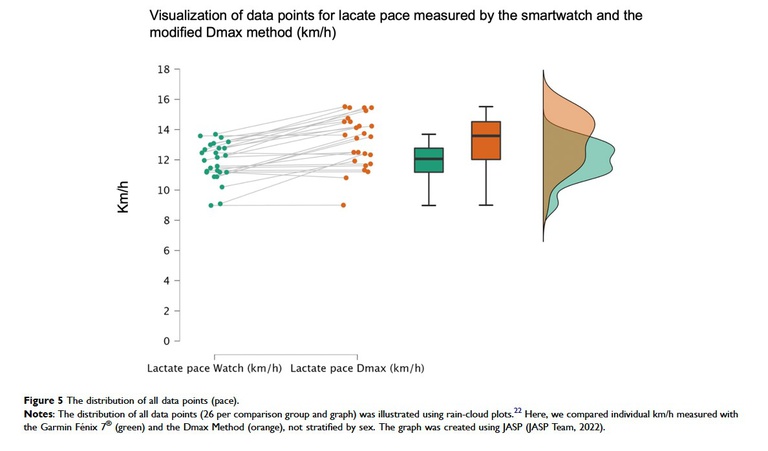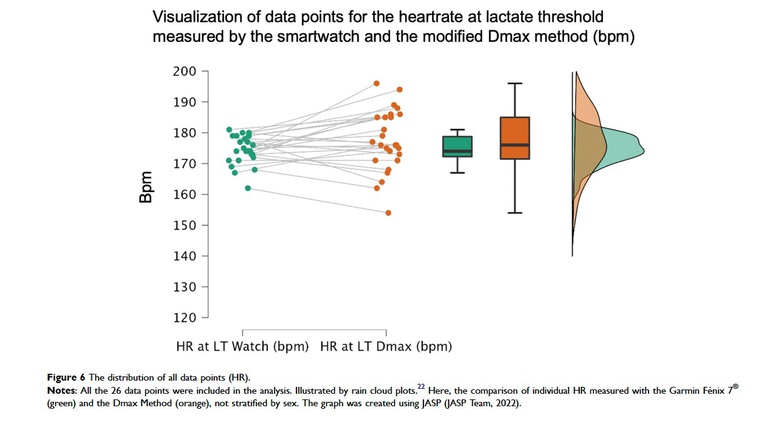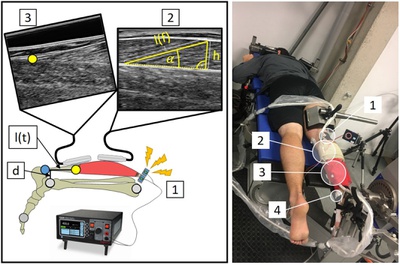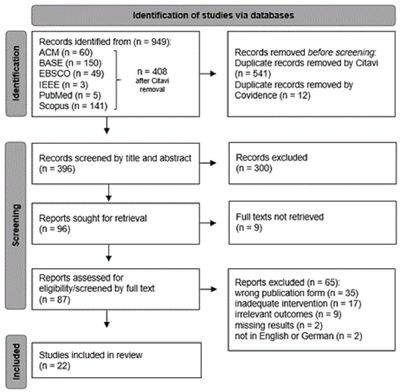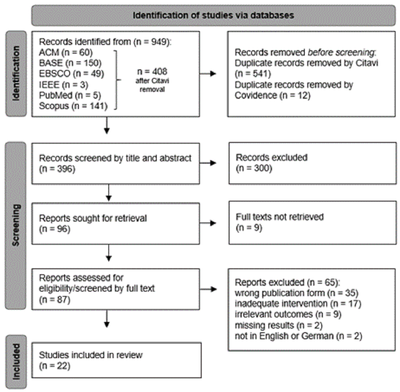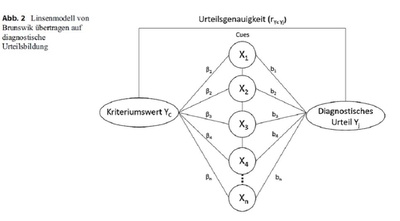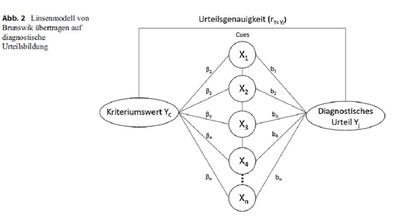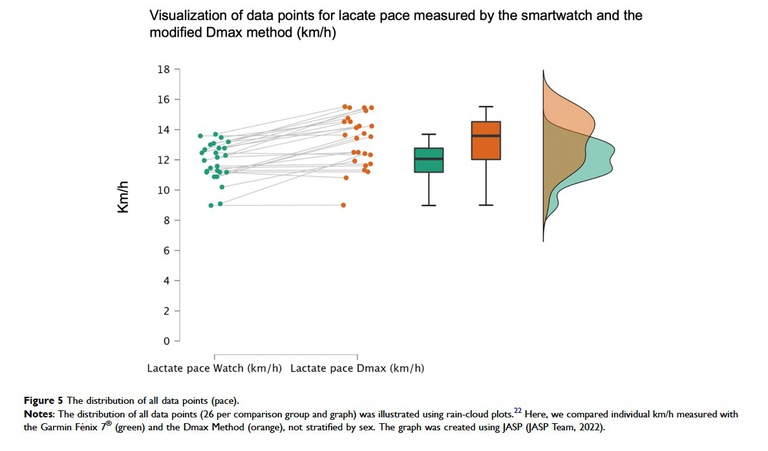
Garmin Fénix 7® Underestimates Performance at the Lactate Threshold in Comparison to Standardized Blood Lactate Field Test
28 Mai 2024
Abstract
Purpose: Lactate threshold (LT) is a critical performance measure traditionally obtained using costly laboratory-based tests. Wearables offer a practical and noninvasive alternative for LT assessment in recreational and professional athletes. However, the comparability of these estimates with the regular field tests requires further evaluation.
Patients and Methods: In our sample of 26 participants (nf=7 and nm=19), we compared the estimated running pace and heart rate (HR) at LT with two subsequent tests. First, participants performed the Fenix 7® threshold running test after a calibration phase. Subsequently, they were tested in a standardized, graded blood lactate field test. Age was 25.97 (± 6.26) years, and body mass index (BMI) was 24.58 (± 2.8) kg/m2.
Results: Pace at LT calculated by Fenix 7® (M=11.87 km/h ± 1.26 km/h) was 11.96% lower compared to the field test (M=13.28 km/ h ± 1.72 km/h), which was significant (p <0.001, d=−1.19). HR estimated by the Fenix 7® at LT was 1.71% lower (p >0.05). LT data obtained in the field test showed greater overall variance.
Conclusion: Our results suggest sufficient accuracy of Fenix 7® LT estimates for recreational athletes. It can be assumed that for professional athletes, it would fail to provide the nuanced data needed for high-quality training management.
Keywords: smartwatch, physical performance, physiology, heart rate, pace